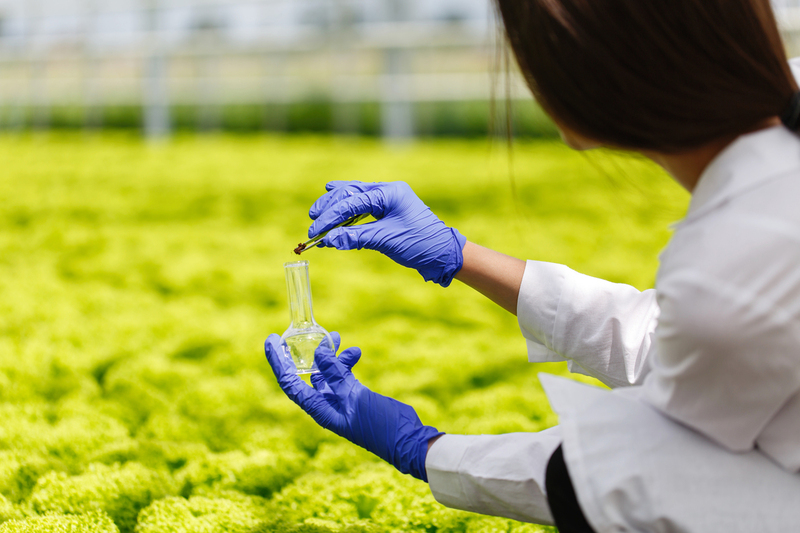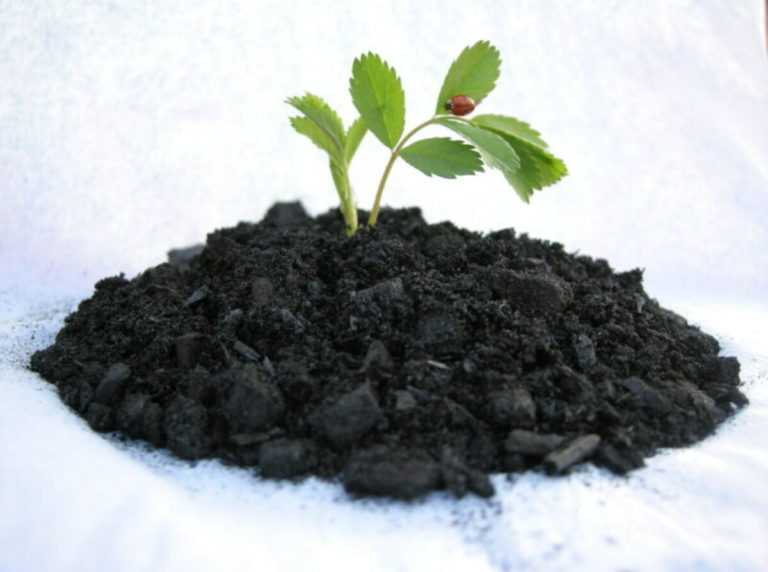Agrophysics: Understanding the Science Behind Soil and Plant Interaction in Agriculture
Agrophysics is a branch of science that deals with the physical properties of soil and their interactions with plant growth and yield. It plays a critical role in modern agriculture by helping farmers and researchers understand soil properties, soil-plant interaction, and crop management practices.
In this article, we will explore the importance of agrophysics in agriculture, its application, and future directions.
Understanding Soil Properties
The complex combination of mineral particles, organic matter, water, and air that makes up soil serves as the bedrock of our natural environment. There are several fields, including agriculture, construction, and environmental management, that benefit greatly from a thorough understanding of soil qualities. To help you better understand soil, below are some of its most crucial characteristics:
Soil texture: The percentages of sand, silt, and clay particles in the soil are referred to as the soil’s texture. How effectively water and nutrients are kept and how easily roots are able to penetrate the soil are both influenced by its texture.
Soil structure: The arrangement of particles into aggregates is what we call the soil’s structure. How well the soil retains and drains water, nutrients, and air depends on its structure.
Soil pH: The pH of the soil can be tested in order to determine whether it is acidic or alkaline. Alterations in the pH of the soil can have repercussions for plant growth and the availability of nutrients.
Soil organic matter: Soil organic matter is made up of dead plant and animal material that has decomposed in the soil. Organic matter affects soil structure, water-holding capacity, and nutrient availability.
Soil nutrients: Soil nutrients are essential for plant growth and include nitrogen, phosphorus, and potassium. The availability of these nutrients depends on the soil pH and organic matter content.
Soil water content: Soil water content refers to the amount of water held in the soil. This affects plant growth and can also affect the stability of slopes and embankments.
A greater knowledge of these soil qualities will allow for more effective management of our natural resources and the promotion of long-term growth. Testing and analyzing soil can reveal its characteristics, leading to more informed decisions on how to best care for it.
Soil-Plant Interaction
The intricate interplay between soil and plants is known as soil-plant interaction. It encompasses the physical and biological interactions that take place between soil and plant roots, as well as the flow of nutrients, water, and gases between the soil and plants.
Because the soil supplies the essential nutrients and water for plant growth, plants are dependent on it for both growth and survival. Plants reciprocate by improving the structure and health of the soil through root development, organic matter exudation, and nutrient cycling.
The following are some of the key ways in which soil and plants interact:
Nutrient uptake: Plants rely on soil for essential nutrients such as nitrogen, phosphorus, and potassium. The availability of these nutrients in the soil is influenced by soil pH, organic matter content, and other factors.
Water uptake: Plants absorb water through their roots, and the soil plays a critical role in regulating the water availability and retention. Soil texture and structure, as well as the amount and timing of rainfall, can all impact the availability of water to plants.
Root growth: Soil physical properties such as texture, structure, and compaction can all influence root growth and development. Plants can also modify the soil structure through root exudation, which can enhance nutrient and water uptake.
Microbial interactions: Soil microorganisms play a critical role in the cycling of nutrients and organic matter decomposition. Plant roots can also support the growth of beneficial microbes through the exudation of compounds such as sugars and amino acids.
Understanding soil-plant interactions is important for sustainable agriculture and land management. By optimizing soil conditions for plant growth, we can improve crop productivity, reduce nutrient and water loss, and minimize the impact of farming on the environment.
Application of Agrophysics in Agriculture
Agrophysics is the application of physical principles and methods to the study of agricultural systems. It is an interdisciplinary field that combines physics, mathematics, engineering, and biology to understand and improve agricultural processes. Here are some of the ways in which agrophysics is applied in agriculture:
- Soil physics: Agrophysics plays a critical role in understanding soil physical properties such as texture, structure, and water content. By studying soil physics, we can optimize irrigation and fertilization practices, improve soil structure and stability, and reduce soil erosion.
- Crop modeling: Agrophysics is used to develop models that simulate crop growth, yield, and water use. These models can help farmers optimize their crop management practices, improve crop productivity, and reduce the risk of crop failure.
- Precision agriculture: Agrophysics is used to develop precision agriculture technologies, such as remote sensing, global positioning systems (GPS), and automated machinery. These technologies can help farmers optimize their use of resources such as water, fertilizer, and pesticides, and reduce input costs.
- Post-harvest management: Agrophysics is used to understand the physical properties of agricultural products, such as grain, fruits, and vegetables. This knowledge can be applied to optimize post-harvest management practices, such as storage and transportation, to minimize losses and maintain product quality.
- Food processing: Agrophysics is used in the design and optimization of food processing equipment and processes. This can improve food safety, quality, and shelf life.
By applying the principles of physics to agriculture, we can develop innovative solutions to meet the challenges of feeding a growing global population.
Challenges and Future Directions
Despite the importance of agrophysics in agriculture, there are still several challenges facing its research and application. In this section, we will discuss some of these challenges and potential future directions for agrophysics.
Challenges Facing Agrophysics Research and Application
One of the main challenges facing agrophysics research and application is the complexity and variability of soil and plant systems. Soil and plant interactions are influenced by a wide range of factors, such as soil type, climate, and management practices. Therefore, it can be challenging to develop generalizable models and recommendations for soil management practices.
Another challenge is the lack of awareness and understanding of agrophysics among farmers and stakeholders. Agrophysics is a relatively new field, and many farmers may not be aware of its potential benefits. As a result, there is a need for more education and outreach to raise awareness and understanding of agrophysics.
Potential Future Directions for Agrophysics
There are several potential future directions for agrophysics research and application, some of which are listed below:
- Climate change adaptation: With the increasing frequency and severity of climate extremes such as drought, flood, and heatwaves, agrophysics research can help develop adaptation strategies for agriculture. This could involve developing crop varieties that are more tolerant to extreme weather events, improving soil water management, and optimizing irrigation practices.
- Sustainable agriculture: There is a growing need for sustainable agriculture practices that minimize environmental impacts and improve social and economic outcomes. Agrophysics research can contribute to this goal by developing technologies that reduce input use, improve nutrient and water management, and enhance soil health.
- Digital agriculture: The use of digital technologies such as sensors, drones, and machine learning in agriculture is rapidly increasing. Agrophysics can play a key role in the development and application of these technologies, which can help farmers optimize their practices and reduce input costs.
- Precision breeding: Advances in genomics and phenotyping technologies are enabling precision breeding, which can help develop crop varieties with desired traits such as high yield, drought tolerance, and disease resistance. Agrophysics can contribute to this field by developing models that predict crop performance under different environmental conditions and by improving our understanding of the physical properties that influence plant growth.
- Soil microbiome: The role of soil microorganisms in nutrient cycling and plant growth is increasingly recognized. Agrophysics research can help us better understand the interactions between soil physical properties and the soil microbiome, and how these interactions can be manipulated to improve crop productivity and soil health.
- Urban agriculture: With the increasing urbanization of the world’s population, urban agriculture is becoming more important as a means of food production and community development. Agrophysics can contribute to this field by developing technologies that enable urban agriculture, such as vertical farming and rooftop gardens, and by optimizing soil management practices in urban environments.
As we face increasing challenges such as climate change and food security, agrophysics research and application will become even more important in developing sustainable and efficient agricultural systems.
Conclusion
Agrophysics is an essential tool in modern agriculture. It helps us to understand the physical properties of soils and plants, their interactions, and how to manage them for optimal crop yield and soil conservation.
Continued research and development in agrophysics are crucial for ensuring sustainable agriculture, reducing environmental degradation, and improving food security. It is therefore important to invest in agrophysics research and application to meet the challenges of the 21st century.
FAQ:
Q. What is agrophysics?
Ans. Agrophysics is a branch of science that deals with the physical properties of soil and their interactions with plant growth and yield.
Q. What are the important characteristics of soil?
Ans. Some of the important characteristics of soil include soil texture, soil structure, soil pH, soil organic matter, soil nutrients, and soil water content.
Q. How does soil-plant interaction affect agriculture?
Ans. Soil-plant interaction affects agriculture by regulating the availability of essential nutrients and water for plant growth and improving the structure and health of the soil through root development, organic matter exudation, and nutrient cycling.
Q. What are the applications of agrophysics in agriculture?
Ans. Agrophysics is applied in agriculture in areas such as soil physics, crop modeling, precision agriculture, post-harvest management, and food processing.
Q. What are some of the challenges facing agrophysics research and application?
Ans. Some of the challenges facing agrophysics research and application include the complexity of agricultural systems, the need for interdisciplinary collaboration, the need for more accurate and efficient measurement techniques, and the need to address sustainability concerns.
Also Read:
The Benefits of Mulch: How to Choose, Apply, and Maintain for a Thriving Garden







